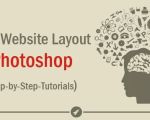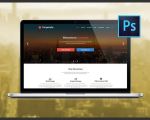- understanding-what-are-the-current-trends-in-website-design
- immersive-interfaces-and-3d-elements
- dark-mode-and-minimalist-aesthetic
- scrolling-techniques-and-micro-interactions
- ai-generated-design-and-personalization
- how-sitepoint-24-helps-you-adapt
1. Understanding What Are the Current Trends in Website Design
For designers, marketers, and business owners asking what are the current trends in website design, the answer is constantly evolving. But one thing is clear: modern websites are no longer just digital brochures—they’re immersive, intuitive, and deeply user-focused. Today’s trends blend aesthetic innovation with strategic usability, and staying on top of them means staying competitive.
Whether you're building a brand from scratch or refreshing a five-year-old homepage, understanding these trends helps shape better digital experiences. More than just buzzwords, these design shifts often reflect changes in technology, user behavior, and cultural expectations.
2. Immersive Interfaces and 3D Elements
2.1 Moving Beyond Flat Design
3D visuals and immersive layouts are making websites feel more like interactive environments. From rotating product models to layered scroll effects, these designs offer users a tactile sense of space—even from behind a screen.
2.2 WebGL and Interactive Animations
WebGL and similar technologies now make it easier to integrate real-time 3D animations without slowing down performance. Brands like Apple and Nike have embraced this to create memorable product showcases that feel cinematic.
2.3 Real Story: The Museum Redesign
In 2024, a major European museum launched a digital relaunch featuring virtual rooms that mirrored the physical space. Visitors could tour exhibitions remotely, complete with clickable art details. The redesign boosted online ticket sales by 42%.
3. Dark Mode and Minimalist Aesthetic
3.1 Visual Comfort and Battery Saving
Dark mode isn’t just trendy—it’s practical. It reduces eye strain, improves readability in low light, and saves energy on OLED screens. Today, more sites offer a toggle option, recognizing user preference as key.
3.2 Minimalism That Speaks Loudly
Gone are the days of cluttered homepages. Clean design, abundant white (or black) space, and laser-focused typography now dominate. Simplicity, when done well, enhances user navigation and strengthens brand identity.
3.3 Case Study: Fashion Startup Flip
Flip, a fashion platform, revamped its website using a black-and-white interface, interactive font animations, and no homepage banner at all. Their mobile bounce rate dropped by 27% within a month. Less really is more.
4. Scrolling Techniques and Micro-Interactions
4.1 Vertical Storytelling
Scrolling isn’t just for navigation anymore—it’s narrative. Scroll-triggered animations and storytelling sequences guide users through content like a cinematic journey. This keeps engagement high and bounce rates low.
4.2 Micro-Interactions Add Delight
Tiny animated feedbacks—like a heart icon that bursts when clicked or a button that subtly wiggles on hover—help users feel seen. These details build emotional connections, especially on e-commerce and portfolio sites.
4.3 Design Tip
Balance is key. Overdoing animations can slow the user experience and frustrate mobile users. Always prioritize speed and accessibility in interactive design.
5. AI-Generated Design and Personalization
5.1 Dynamic Content Tailored to Users
AI-powered platforms now deliver real-time personalization. From content suggestions to layout adjustments based on user behavior, the design literally adapts to the individual.
5.2 Tools That Speed Up Creation
Tools like Framer AI and Wix ADI use prompts or user data to generate design structures in minutes. While they’re not replacing human creativity, they accelerate prototyping and ideation.
5.3 Real Example: Local Bakery Boost
A Rhode Island bakery integrated AI-based personalization on its ordering page. Returning customers saw their last order as a quick-buy option. Repeat purchase rate rose by 34% in under two months.
6. How SitePoint 24 Helps You Adapt
As trends in design evolve, it's crucial to have a partner that evolves with you. SitePoint 24 provides up-to-date resources, design templates, trend analysis, and expert guidance to help businesses and creatives stay ahead of the curve.
Whether you're exploring immersive design, implementing dark mode, or looking to integrate AI-powered personalization, SitePoint 24 helps you bring ideas to life. Their curated tools and insights ensure your web presence isn't just current—it’s visionary.








